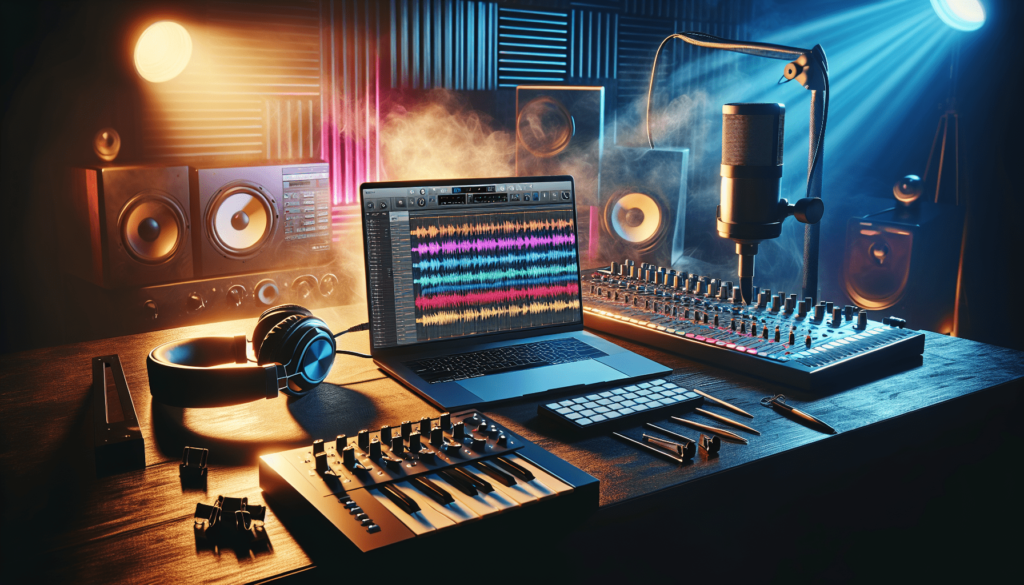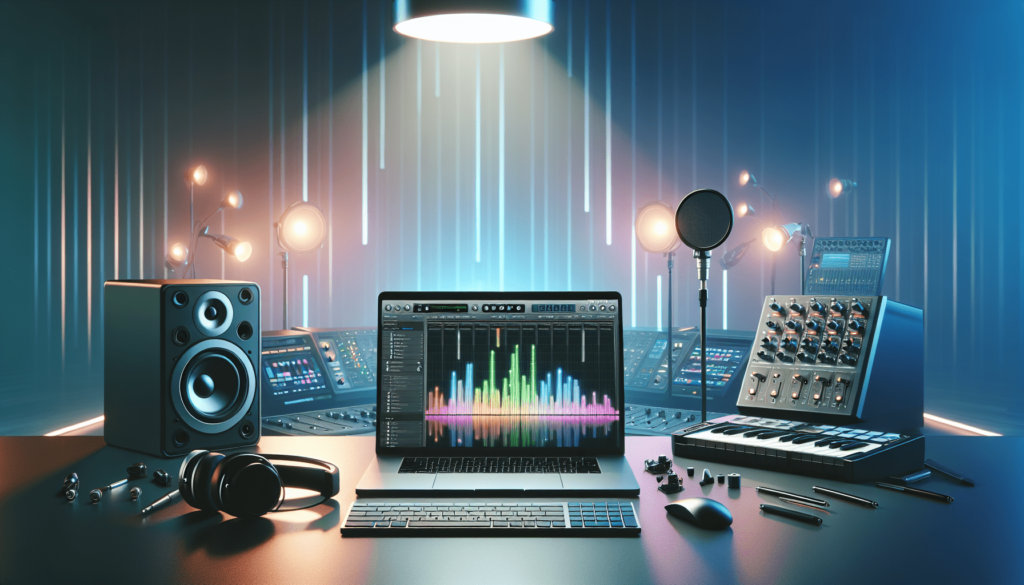Have you ever thought about how you could transform your musical ideas into fully polished tracks?
Understanding the Basics of FL Studio
FL Studio, known for its user-friendly interface and powerful functionalities, is a digital audio workstation (DAW) that many music producers swear by. Getting to know the basics can significantly enhance your music production skills.
The Interface
When you first open FL Studio, you’ll see a variety of windows: the Channel Rack, Playlist, Mixer, and Piano Roll. Each of these windows plays a crucial role in the music-making process.
- Channel Rack: This is where you manage your sounds and instruments. You can add, remove, and adjust the properties of each sound here.
- Playlist: This area allows you to arrange your sounds and patterns. You can visualize your entire track layout here.
- Mixer: The mixer is where you can mix and fine-tune your sounds. You can add effects and adjust levels, making it an essential part of the mixing process.
- Piano Roll: Use this feature to write melodies and harmonies. It’s beneficial for managing notes that you want to copy and paste or edit.
Navigating Through Menus
Understanding the menu options can also aid your workflow. Familiarize yourself with the following:
- File Menu: This lets you save, open, and export your projects.
- Edit Menu: Features tools to manipulate the sound clips you are working with.
- Add Menu: This is where you can add effects, instruments, and sounds.
Getting comfortable with these areas will help you navigate FL Studio more efficiently.
Getting Started: Installation and Setup
Setting up FL Studio correctly ensures a smoother production experience.
Installation Requirements
Before downloading FL Studio, check that your computer meets the system requirements. You’ll need:
- Operating System: Windows 8.1, 10, or later. Mac users can operate on macOS 10.13.6 or later.
- Processor: A decent multi-core processor (Intel or AMD).
- RAM: At least 4 GB of RAM, but 8 GB is recommended for larger projects.
Configuring Your Audio Settings
Once you’ve installed FL Studio, it’s vital to configure your audio settings for optimal performance.
- Go to Options > Audio Settings.
- Choose your primary audio device. If you have an audio interface, select it here.
- Adjust the buffer length. A shorter buffer will reduce latency but may cause crackling if set too low, especially during playback.

Crafting Your Sound: Creating and Organizing Patterns
After getting your audio settings right, crafting your sound is where the fun really begins.
Creating Patterns
Patterns in FL Studio are the building blocks of your song. To create a new pattern:
- Click on the + button in the Channel Rack to create a new pattern.
- Select the instrument or sound you want to use.
- Use the step sequencer to input your beats or notes. You can also record live input if that feels more natural.
Organizing Patterns in the Playlist
Once you’ve created multiple patterns, it’s time to organize them in the Playlist:
- Drag your patterns from the Channel Rack into the Playlist.
- Arrange them to form the structure of your song. You can experiment with layering sounds until it feels just right.
Naming and Color-Coding
Don’t overlook the importance of organization. Right-click on your patterns in the Playlist and choose Rename/Color. Naming and color-coding your elements will make it easier for you to find specific sections of your track, especially as you add more complexity.
Building Your Sound: Instrument and Sound Selection
Selecting the right instruments and sounds can make all the difference in your production.
Using the Built-in Instruments
FL Studio comes with a plethora of built-in instruments that have different affinities. You may want to experiment with:
- Sytrus: A powerful synthesizer with a wide variety of presets.
- Harmless: A subtractive synth that offers a unique sound design capability.
- Fruity Sampler: A straightforward way to import and manipulate your samples.
Importing Your Audio Samples
If you prefer to use unique sounds, importing your own samples is easy:
- Click on Add > Audio Clip in the Channel Rack.
- Locate your audio file and import it. You can use sounds from various royalty-free sources online.
Using Third-Party Plugins
Don’t shy away from third-party plugins either. Plugins like Serum, Massive, and Splice can elevate your sound profile beyond the stock instruments. Always ensure they’re compatible with FL Studio to avoid any device issues.

Crafting Your Composition: Arranging Your Track
Arranging your track effectively makes your composition cohesive.
Building the Structure
Most songs follow a recognizable structure (e.g., intro, verse, chorus, bridge, outro). Try outlining your song before you start arranging:
| Section | Description |
|---|---|
| Intro | Sets the mood, establishes the key. |
| Verse | Tells the story; the music should develop. |
| Chorus | The catchy part; should be memorable. |
| Bridge | A break from repeated sections, adds variety. |
| Outro | Signals the end; can recap themes. |
Adding Transitions
Transitions keep your music flowing smoothly. You can create them using effects, risers, or breaks. Automate volume fades or add snare fills before a drop to create anticipation and maintain interest.
Experimenting with Sections
Never hesitate to experiment! Use the Playlist view to duplicate sections and alter them slightly to create variation. This helps break the monotony and conveys emotion effectively.
Mixing Your Track: Getting the Balance Right
Mixing is where the magic really happens. A good mix can take an average track to a professional level.
Understanding EQ
Equalization (EQ) is vital for balancing the frequency ranges of your track. Here are key considerations:
- Low Frequencies: Typically belong to kick drums and bass; shouldn’t overpower everything else.
- Mid Frequencies: Where most melodic elements sit, including vocals. Ensure they’re clear and punchy.
- High Frequencies: Include cymbals and effects; add brightness but don’t let them overshadow other elements.
Using Compression
Compression smooths out the dynamics of your track. Here’s how:
- Insert a compressor on your desired mixer channel.
- Adjust the threshold to decide how much sound you want to compress.
- Set your ratio; a good starting point is a 3:1 ratio.
Panning Your Sounds
Panning helps create a sense of space in your mix. Position different sounds across the stereo field:
- Bass and kick should typically remain centered.
- Pad sounds can be panned slightly left or right to create dimension.
Final Touch: Mastering Your Track
Mastering is the final step to ensure your track sounds polished across all playback systems.
Exporting Your Track
Before you master, make sure your track is ready for export. Go to File > Export > WAV/MP3. Choose your desired quality settings, then select your export location.
Mastering Chain
Creating a mastering chain helps polish your track. A typical chain might include:
| Effect | Purpose |
|---|---|
| Limiter | Prevents clipping; controls the overall loudness. |
| EQ | Balances frequencies across the entire track. |
| Compression | Tightens up the mix and adds punch. |
| Stereo Enhancer | Widens the stereo image for a fuller sound. |
| Dithering | Improves quality when converting to lower bit depths. |
Using Reference Tracks
Having a few reference tracks at hand is beneficial. Listen to tracks that inspire you and analyze their elements. Compare levels, panning, and EQ settings with your track to help guide your mastering process.
Tools and Tips for Efficiency
Efficiency can be a game changer in your music production process.
Keyboard Shortcuts
Learning keyboard shortcuts can save a lot of time. Here are a few commonly used ones:
| Shortcut | Action |
|---|---|
| Ctrl + T | Create a new track in the Playlist. |
| Ctrl + A | Select all notes or clips. |
| Ctrl + Z | Undo the last action. |
| Ctrl + S | Save your project. |
Customizing Your Workflow
Customize your workspace to suit your working style. Resizing windows and clearing clutter can help maintain focus and efficiency.
Beginning with Templates
Consider starting with templates if you’re unsure how to begin your track. FL Studio offers several templates that cater to different genres. These pre-existing structures can be a great launchpad.
Exploring Advanced Features
As you gain confidence and experience, diving into advanced features can really help enhance your production game.
Automation
Automation allows you to control plugin parameters over time, adding dynamic changes to your track. You can automate volume, panning, and effects:
- Right-click on the parameter you wish to automate and select Create Automation Clip.
- In the Playlist, manipulate the envelope to shape your automation.
Using MIDI
MIDI (Musical Instrument Digital Interface) can take your music production to another level. Here’s a simple overview:
- Connect a MIDI keyboard to your computer.
- Use it to record melodies directly into the Piano Roll.
- You can also use MIDI notes to trigger samples you’ve imported into FL Studio.
Troubleshooting Common Issues
Even seasoned producers run into problems. Here are a few common issues and solutions:
Audio Not Playing
If you experience problems with audio playback, first check these:
- Ensure your audio device is set correctly in Audio Settings.
- Check the mixer levels to confirm they are not muted.
- Restart FL Studio to refresh settings.
High CPU Usage
Heavy projects can lead to high CPU usage. Here are some tips to prevent this:
- Use Render to Audio Clip for sections of your project that don’t need further editing.
- Optimize your audio settings by increasing the buffer length during high-load operations.
Continuous Learning
Mastering FL Studio is an ongoing journey that requires practice and continual learning. Consider these ways for expanding your knowledge further:
Online Courses and Tutorials
Platforms like YouTube and dedicated music courses offer endless resources. Many experienced producers provide step-by-step guides that can deepen your understanding.
Joining Community Forums
Engage with FL Studio communities and discussion forums. These platforms allow you to share your work, get feedback, and exchange knowledge with fellow producers.
Networking with Other Producers
Don’t hesitate to network with local musicians and producers. Collaborating with others can provide new perspectives on your work and often leads to impressive results.
Wrapping Up
Embarking on your journey to mastering music production in FL Studio may seem overwhelming at first, but with practice and patience, you can create tracks that resonate with listeners. Remember, every music producer was once a beginner, and just like you, they learned through exploration and experience. So get started and have fun along the way – your next hit is just around the corner!



